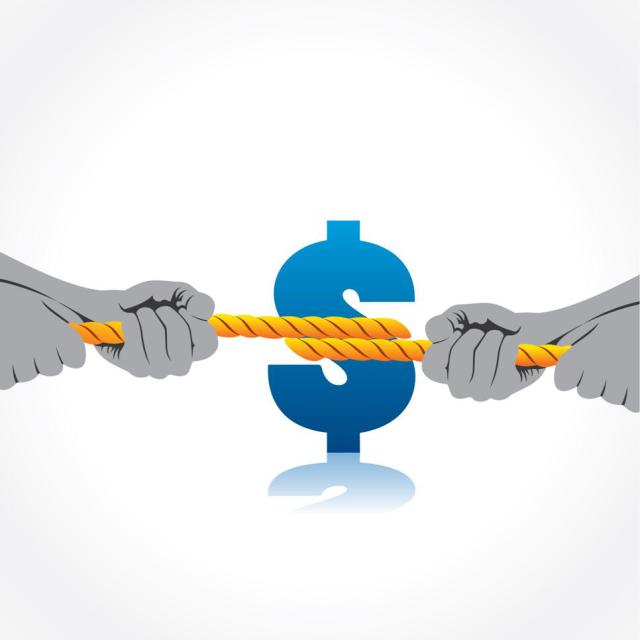There are many assumptions about decision-making being a result of personality rather than strategy. Decision-making is strategic and has nothing to do with personality. So, leaders need to understand that personality can’t stand in the way of making critical or correcting corporate decisions that will be in the best interest of the business. So, let’s dive in and look through the leadership decision-making styles, types of decision-makers, analytical decision-making, and behavioral decision-making. I hope you find this article very informative and helpful too.
Decision Making Styles
It’s important to note that leaders can alter their approach to decision-making to accommodate the demands of diverse business situations. Practicing good decision-making can improve your leadership qualities. This explains why every leader needs to know and understand their decision making style. When you identify your decisive style, you can learn how to manage the outcomes of a situation when you need to provide a solution.
Decision-Making Styles in management
Before we look at the patterns, it’s helpful to define the decision styles. We have observed that decision styles differ in two fundamental ways:
How information is used and how options are created. When it comes to information use, some people want to analyze all the related data before they make any decision. In the management literature, such people are called “maximizers”. Maximizers can’t rest until they are certain they’ve found the very best answer. The result is a well-informed decision, but it may come at a cost in terms of time and efficiency. However, Others just want the key facts—they’re likely to jump to theorem and then test them as they go. A borrows a term from behavioral economist Herbert Simon: “Satisficers” are ready to act as soon as they have enough information to satisfy their requirements.
As for creating options, “single focus” decision-makers strongly believe in taking one step at a time. While their “multi-focused” counterparts generate lists of possible options and may pursue multiple courses. Single-focus people put their energy into making things come out as they believe they should, multi-focus people adapt to circumstances.
Using the two dimensions of information use and focus, we’ve created a matrix that identifies four styles of decision making:
Decisive (little information, one course of action); flexible (little information, many options); hierarchic (lots of data, one course of action); and integrative (lots of data, many options).
Analytical Decision Making
Analytical style decision-makers are people who carefully compile all facts to come up with the best or most comprehensive solution. These style decision-makers are task-align but have a high tolerance for ambiguity. As a result, they are likely to take a long time to process decisions or come up with a conclusion. Therefore, analytical-style decision-makers are not risk-takers because they won’t take a step further until they figure out the end result.
They find comfort with uncertainty and will like to consider all options before making a decision. For instance, when you think of creative solutions and are willing to give most possibilities a chance. However, you only like to move forward once you are certain beyond all reasonable doubt that that choice is best for you.
While making responsible decisions is a strength of analytical style decision-makers. Their weaknesses tend to be making timely decisions, communicating with others, and managing stress during the decision-making period.
Types of Decision-Maker
Let’s look at the different types of decision-makers below:
#1. The Instinct Follower
The first type of decision maker we will look at is the instinct follower. The instinct follower is arguably the easiest decision-maker on this list, but note that there’s nothing wrong with following your instincts to make decisions.
If different possibilities and a lot of information on each side are presented to pick a better choice, the instinct follower will generally form an immediate impression, and side with whichever one that impression relates with.
On the surface, this may seem like a faulty way to make decisions, like they say “don’t judge a book by its cover”, but it’s in-built into human nature.
Moreover, with enough experience, this can actually prove to be a better way to make decisions because it’s fast, and it spares you the possible misleading nature of outside information.
#2. The Interviewer
The interviewer doesn’t like to make decisions alone. Even when confronted with a tough choice, they’ll seek out alternative opinions and views almost irresistibly.
They are willing to ask everyone they know about their take on the matter. This doesn’t mean they let other people make decisions for them, but they do factor in their insights and opinions to a significant degree.
The key for the interviewer to succeed is to ask opinions from the right people. You can’t listen to just anybody, try to find people who have been in similar situations in the past, and see what they have to say.
It also pays to ask the right questions; instead of focusing on which decision a person would make in your shoes, ask why they would make it, and what factors they’re considering that you might not be.
#3. The Comprehensive Researcher
The researcher follows through the decision-making process carefully with research as a backup.
Moreover, what makes the researcher unusual, is the process. The researcher will take time to draw in new information about the situation from as many sources as possible, hoping to find something closely related that will lead to a definitive conclusion.
For example, if trying to decide between two states/ countries where to spend your next vacation. The researcher may dig deep to find out the places with the best tourist centers, the best foods e.t.c
The comprehensive researcher can benefit from expanding his research sources and acknowledging that no one piece of evidence will be enough to make any decision complete.
#4. The Debater
The debater is similar to the researcher in the sense that they will probably gather tons of information and research before settling on anything.
However, instead of trying to convince the debater with one piece of information, the debater argues and will not settle for anything without proof or evidence.
This is the type of person who sketches out exhaustive pro/con lists and tries to boil down the decision to a quantifiable level.
On the surface, the debater seems to be the most logical, and therefore the most effective decision-maker in the bunch.
However, there are a handful of potential pitfalls to this approach.
For example, it’s almost impossible to compare any two decisions apples-to-apples; you’ll end up weighing some factors in ways that skew your leanings.
It’s hard to compensate for these, but the best way is to remain as distant as possible; try not to lean too heavily on your system, and understand that few decisions have an objectively better choice.
#5. The Random Chance Submitter
Any of the above types of decision-makers can become the type to rely on the random chance if they have a hard enough time picking a clear winner among their possible options.
You might have done your research and evaluated the options carefully, but if you reach the point where there isn’t a clear option, a coin flip could help.
This isn’t the best way to make a decision, but it’s a decent enough standby, especially if you maximize your chances of success by only considering the worthwhile options, to begin with.
I’d be lying if I said this model is rigid, or that everyone in the world neatly adheres to it, but it can help you better understand the methods you use to make decisions, and quite possibly, make you a better decision-maker in general.
In fact, it’s more likely that you see shades of yourself in all these types of decision-makers, even if you find yourself aligning to one more than the others.
Behavioral Decision-Making
A behavioral style of decision-making focuses on relationships more than the task. It evaluates the feelings of others as part of their decision-making process. Behavioral decision-makers have a low tolerance for ambiguity and a social focus as they evaluate solutions.
These decision-makers rely on information from others to guide what they choose. They are strong communicators who value decisions based on a team agreement. Their decisions are often based on how the choice will impact relationships.
Behavioral Decision-making aims to elaborate on the aspects of judgment and choice behavior along with a good understanding of the mind which helps in improving the decision-making behavior of an individual. While forming ideas and beliefs about actions that are not certain, numerous attributes liking, taking calculated risks while making a final decision, as well as a structured decision-making process.
Leadership Decision-making Style
What is the most effective leadership decision-making style that works best for you and your team? Let’s discuss clear insights into the common leadership decision-making styles and explore how to develop your decision-making style.
#1. Autocratic Leadership Decision Making Style
An autocratic leadership decision-making style is one that illustrates the word “Do as I say.” Generally, an autocratic leader believes that he or she is the smartest person at the table and knows more than others. They will love to make all the decisions with little input from team members. They also don’t listen to details carefully, you can’t quarry or ask questions about the reasons for their decisions. You just do as you are told.
In the past, this command-control technique was common in leadership decision-making styles. But now? Not so much.
That’s not to say that the style may not be appropriate in certain situations. For instance, you can lend an autocratic leadership style when crucial/ very important decisions need to be made on the spot, and you have the most experience with the situation.
#2. Serving Leadership Decision-Making Style
The authoritative leadership decision-making style is that of confidence. As these leaders map the way and set expectations while engaging and energizing followers along the way.
In a state of ambiguity, these leaders lead while still encouraging their team. They help them see where the company is going and what’s going to happen when they get there.
Unlike autocratic leaders, authoritative leaders take the time to explain their thinking: They don’t just issue commanding or controlling orders. Moreover, they allow people to put forward their opinions on how to achieve common goals.
#4. Democratic Leadership Decision-Making Style
A Democratic leader is more likely to seek your opinion. They share information with employees about anything that affects their work responsibilities. They also ask employees’ for their point of view before approving a final decision.
There are countless benefits to this interactive leadership style. It can kindle trust and promote team spirit and cooperation from employees. It allows for creativity and helps employees grow and develop. A democratic leader gets people to do what they want to be done but in a way that they want to do it.
#5. Coaching Leadership Decision-Making Style
A coaching leader will tend to have a considerable approach. A leader who coaches views people as a pool of talent to be developed and also seeks to unlock people’s potential.
Leaders who use a coaching style open their hearts and doors to people. They believe that everyone has the power within themselves. A coaching leader gives people a little direction to help them tap into their ability to achieve all that they’re capable of.
#6. Pacesetting Leadership Decision-Making Style
This is the leadership decision-making style tagged with the word “Do as I do!”. This style describes a success-driven leader who sets the bar high and pushes their team members to run hard and fast to the finish line.
While the pacesetter style of leadership is effective in getting things done and driving for results, it’s a style that can hurt team members. For one thing, even the most driven employees may become stressed working under this style of leadership in the long run.
Should you avoid the pacesetting style altogether? Not so fast. If you’re an energetic entrepreneur working with a like-minded team on developing and announcing a new product or service, this style may serve you well. However, this is not a style that can be kept up for the long term. A pacesetting leader needs to let the air out of the tires once in a while to avoid causing team burnout.
#6. Affiliative Style
A phrase often used to describe this type of leadership is “People come first.” Of all the leadership styles, the affiliative leadership approach is one where the leader gets up close and personal with people. A leader practicing this style pays attention to and supports the emotional needs of team members. The leader strives to open up a pipeline that connects him or her to the team.
Ultimately, this style is all about encouraging harmony and forming collaborative relationships within teams. It’s particularly useful, for example, in smoothing conflicts among team members or reassuring people during times of stress.
In Conclusion
Making decisions could be tough most time. So, make sure in every decision you make you would have no course for regrets.
FAQs
What is decision-making and why is it important?
Making decisions is possibly the most crucial aspect of a manager’s job. It is the most crucial aspect of the planning process. When managers plan, they consider a variety of factors, including the goals that their organization will pursue, the resources that will be used, and who will do each task.
What are the 5 decision making styles?
The five decision-making styles include Visionary, Guardian, Motivator, Flexible, and Catalyst.
What are the 4 decision making styles?
The four forms of managerial decision-making include directive, analytical, conceptual, and behavioral.
- Management Styles: Different Management Types Explained!
- 30 Most Searched Customer Service Skills (full details)
- Real Estate Business Cards: Best Ideas, Templates, Samples & Quotes to Close deals Faster
- Customer relationship: Everything you need to know (+ free strategy plan)
- Leadership Team: Developing an Effective Workforce
- SHARED LEADERSHIP: Overview, Model, Examples, Theory
- Leadership Coaching: What is Leadership






